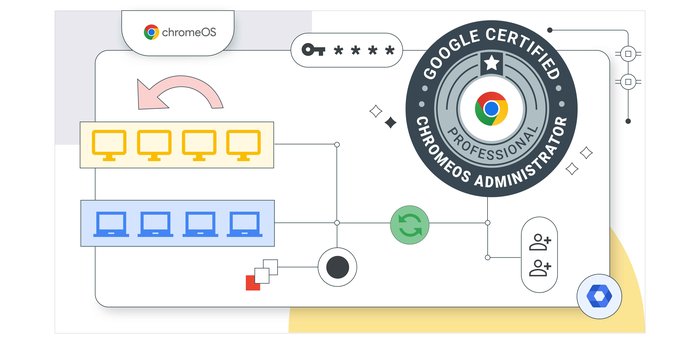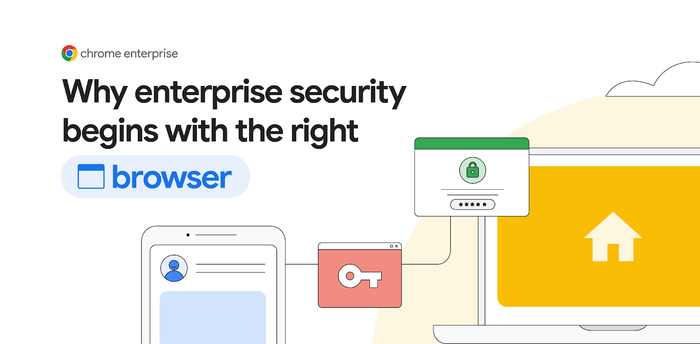The future of enterprise: Your business, in the browser

Parisa Tabriz
VP, Chrome, Google
No one could have predicted a year like 2020, and businesses have needed to respond to changing conditions and new business requirements. I’ve been inspired by how some organizations—my husband’s employer, the hospitals my mom and brother work at, our local schools, as just a few examples—have been able to adapt quickly to changing times. And I’ve had the opportunity to talk to customers over the last few months to hear about their year of change. For example, during a recent discussion with Adrienne Schutte, Global Change Director at PwC, I learned how they were able to seamlessly enable remote work for more than 275,000 employees across the globe. As a professional services firm, they had to reimagine how to virtually win and deliver client work, while keeping employees informed and engaged. Solutions like G Suite, Chrome and broader investments in cloud technology put them in an ideal position to handle unexpected business disruptions.
PwC is not alone. Organizations making investments in cloud and web are in a more favorable position to support future change. Even ahead of shelter in place and extensive work from home initiatives, business users reported spending 75% of their work day either working in a web browser or attending virtual meetings1. And since then, we know the reliance on web apps and cloud-based meeting solutions has continued to increase. Google Meet alone saw a 30x increase in demand.
The web browser plays a critical role in bringing together the technologies that organizations need to drive their businesses forward. Gone are the days of the browser only serving as one-way access to the web. Business users will continue to use their browser as a critical part of their workspace, where they securely access the data and apps they need, and where they are supported by a platform that directly serves their productivity needs. We’re continuing to push the boundaries of what IT teams and business users should expect from Chrome. The browser is becoming increasingly purpose-built for work, and IT teams now have the visibility they need to make better decisions for their business.
Chrome is a critical part of the end user computing experience, and we are committed to helping redefine how IT teams can support their increasingly cloud-first workforce. There are four key areas we are the most excited about for enterprises:
The user always matters
When Chrome launched 12 years ago, our focus was giving all users a fast, secure, reliable browser experience, built to support the evolving landscape of content and applications on the web. We continue on this path, and our latest release of Chrome was no exception. From better ways to organize and manage tabs, performance improvements, and features that make sharing easier across desktop and mobile devices, we’re always investing in new and improved functionality that helps users across their personal and work lives.
Building on existing cloud management innovation
As we look forward, supporting IT teams that need to manage their workforce web experience continues to be a top priority. Chrome Browser Cloud Management is already available to IT professionals at no additional cost, and gives organizations unprecedented control and visibility over their enterprise browser deployments across platforms. This model allows for management and policy enforcement while users are on and off the corporate network. This is especially important for organizations that need to support a larger remote or distributed workforce.
We’re building on that functionality with new APIs that offer more flexibility on data export, to serve customers interested in more detailed reporting and compliance through third-party tools. We’ve also added granular update controls to cloud management, making it easier for IT teams to control when and how updates are handled.


We have more new capabilities in the works, including the addition of APIs for more flexibility around policy setting. We’re also planning on introducing remote commands that give IT admins the ability to handle common tasks, like clearing cache for specific browsers, with a single click. This will allow admins to easily resolve end user issues related to caching on certain websites, getting users back to full productivity ASAP.
Adding more enterprise-specific browser security
We know that security is top of mind for IT admins, and we continue to lead the web ecosystem around strengthening security. In addition to Chrome’s built-in protections, we’re giving admins more visibility and controls to manage Chrome extension deployments across their organization. For example, we now support IT teams reviewing and approving or denying new extensions requests. Later this year, we will begin to introduce an IT-optimized experience that allows users to request an extension from the Chrome Web Store, and supports an IT approval workflow. This gives IT teams the opportunity to review extensions before they are permitted for installation, while tracking and automating key parts of the process. IT can ensure their security requirements are enforced, while still allowing users to benefit from the added productivity of extensions.


Beyond extension security, we see an opportunity to further secure enterprise users as they interact with potential web threats in real-time. The browser is a critical part of enterprise zero trust security strategies. We’ll be sharing some exciting announcements in the coming months related to how Chrome and Google Cloud security solutions can work together to detect threats, prevent potential breaches, and apply added controls around data leaks.
Integrating with an ecosystem of app providers
The browser continues to be an entrypoint for the cloud and web apps that keep businesses moving. By combining the power of SaaS apps and the Chrome web platform, we’re exploring new ways that industry-leading Google and third party applications can more seamlessly work in Chrome. Look for some exciting announcements later this year as Chrome and our partners share some of our plans.
There is a lot for enterprises to look forward to with Chrome. We commit to deliver an enterprise experience that goes beyond Chrome as a reliable and trusted web browser to deliver on the management, security and user experience needs of organizations worldwide. With ⅔ of IT teams reporting that their work from home scenarios may be permanent, Chrome is innovating for the long haul, and we’re eager to partner with customers to support enterprises as the future of work and the web continues to evolve.
For IT professionals that want to hear more about what we are up to, we have two ways for you to connect this week. On Tuesday, a team of our Chrome Enterprise experts will host a 90-minute, technical Admin Essentials virtual event. They’ll give you an update on our product roadmap and show you the tips and tricks you need to maximize Chrome in your environment. On Thursday, I’ll be joining Forbes for the digital event “2020 and Beyond: Tailoring the Web for a New Era of Business.” I’ll chat with Forbes’ Alex Conrad, share some insights on Chrome’s vision for the future of the web, and we’ll talk a lot more about enterprise. Hope to see you there!
1. A commissioned study conducted by Forrester Consulting on behalf of Google, "Cloud Workers Are Key To Disruption Preparedness", 2020.



